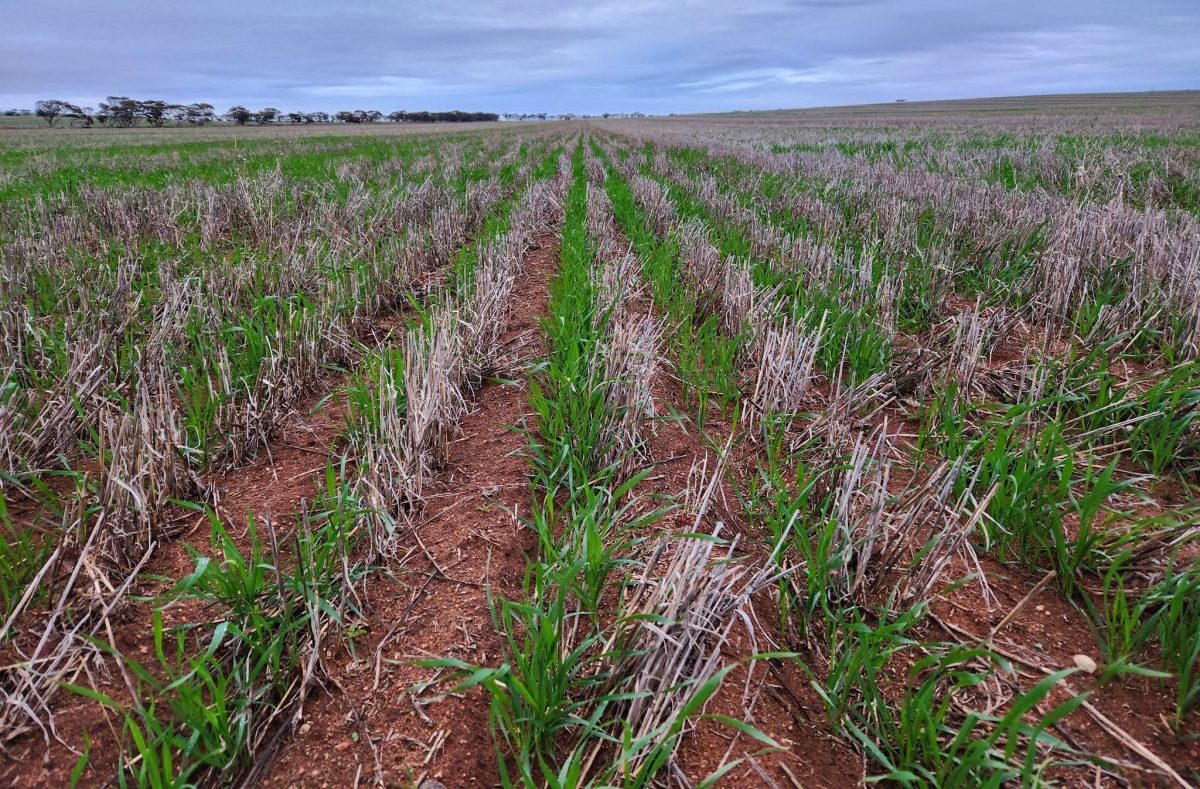
This thriving early planted wheat crop was top dressed with urea last week ahead of recent rain. Photo: Sharon Starick, Kongolia Farms
THIS month has seen some big rainfall totals recorded in the South Australian grainbelt, where growers are putting their hands up for more urea than is currently available.
As outlined in an article published today by episode 3 analyst Andrew Whitelaw, it appears the SA grower is not alone.
“The demand for urea this year was looking to be constrained in Australia as dry conditions were expected to prevail,” Mr Whitelaw said.
“In many parts, there has been an uptick in demand due to better-than-expected moisture.”
A drop in European natural gas prices has allowed global urea prices to fall, and episode3 analysis said that has led to urea landed in Australia is now the cheapest it has been since January 2021.
“None of the fertiliser companies want to be holding expensive stock when new cargoes come in.
“We’ll see in a couple of months whether the shortage transpires or not.”
At Balaklava in SA’s Lower North, Gibbons Agronomy principal Matt Gibbins said the urea supply was “a bit tight”.
“If you forward ordered it, it isn’t,” Mr Gibbins said.
“Most growers have enough for a first application and are waiting to see if they need a second.”
Mr Gibbins said it appears fertiliser companies as well as growers were loath to book more tonnes than they could be sure they would push out in coming weeks.
“It seems like they were playing the forecast too.”
Season kind for most
Grain Producers SA chief executive officer Brad Perry said while pockets of the Eyre Peninsula missed out on one or both major rain events this month, cropping conditions across the state were bright overall.
“Generally, its’ looking really good and…some are telling me it’s a better start than last season.”
Recent rain has added to subsoil moisture stored from last year’s rain events.
In the week to 9am today, registrations on EP include: Cleve 17mm; Cummins 49mm, Kimba 23mm; Lock 31mm, and Wudinna 27mm.
Most of Yorke Peninsula had 20-40mm for the week, while parts of the Murray-Mallee had 10-20mm while others missed out.
From the Adelaide Plains to the Upper North, and in the South East, most cropping districts had 20-45mm, although some locations missed out on even a shower.
“I don’t know if there’s anywhere that’s too wet, but the South East has had a lot of rain and they’ve got a full profile.”
Mr Perry said urea to top-dress crops was not easy to come by, and speculated that fertiliser companies as well as growers may have underestimated the yield potential in crops at this early stage.
“It’s a challenge getting hold of urea.”
Mr Perry concurs with the idea that growers and fertiliser companies may well have under-ordered in the face of an expected return to dry conditions related to El Niño.
Wet June on lower EP
At Cummins on the Lower EP, grower Michael Treloar said 100mm has been tipped out of the gauge in June so far, almost one quarter of the region’s annual average rainfall of 425mm.
He said the family’s cereal, pulse and canola crops were tracking well.
“Seeding was quite timely, and we had rain just after Anzac Day, with most crops sown into moisture which means they germinated well.
“All in all, we’re pretty happy with how things are tracking, and looking for a fine week to do some spraying and get some urea out.”
“Spring is when crops are flowering and filling, so having some good winter rainfall makes all the difference when we get to spring.”
“If the prediction for a drier spring eventuates, this moisture will be pretty important.”
Mr Treloar said mice, slugs and snails were doing some minor damage to crops, particularly canola.
Grain Central: Get our free news straight to your inbox – Click here

HAVE YOUR SAY